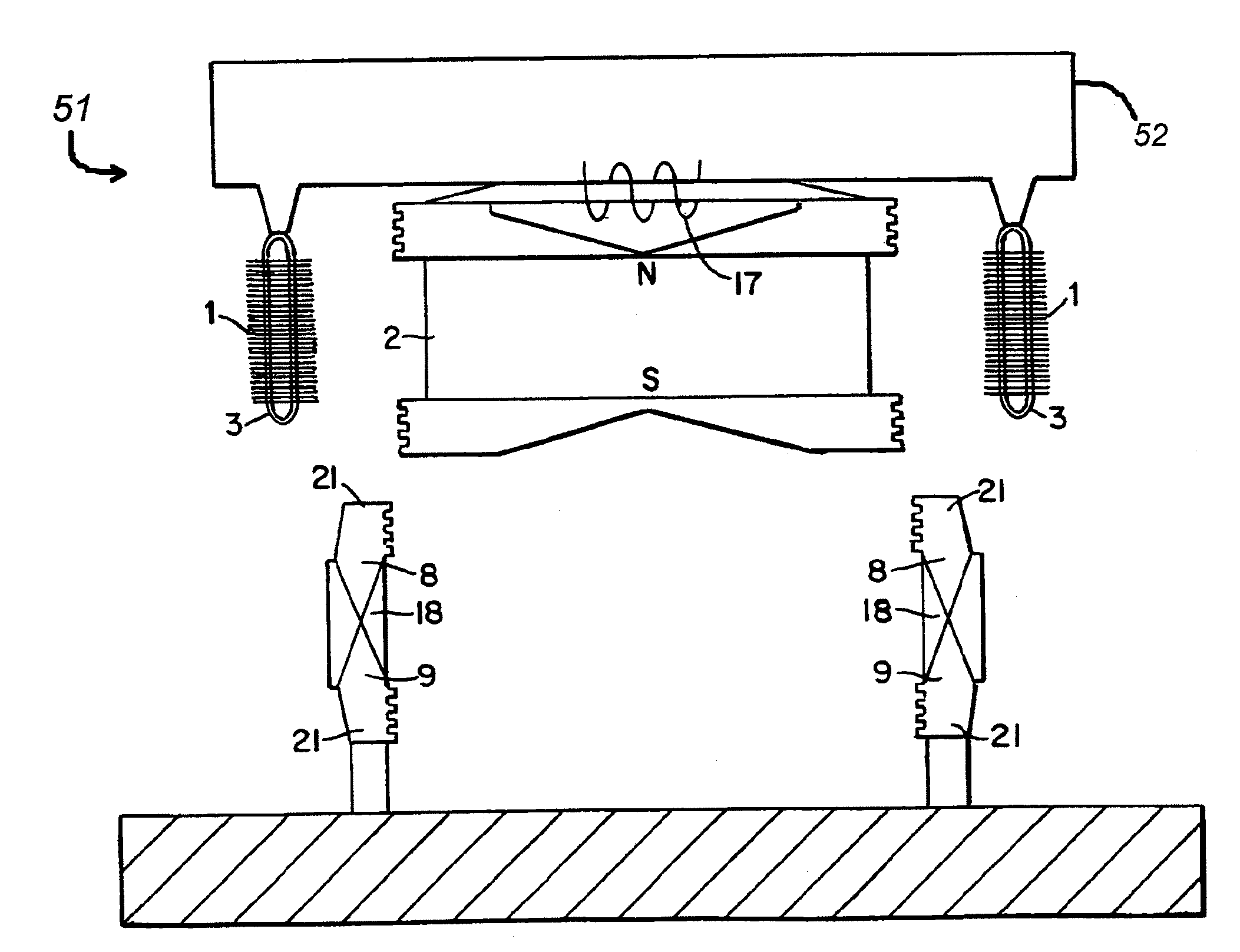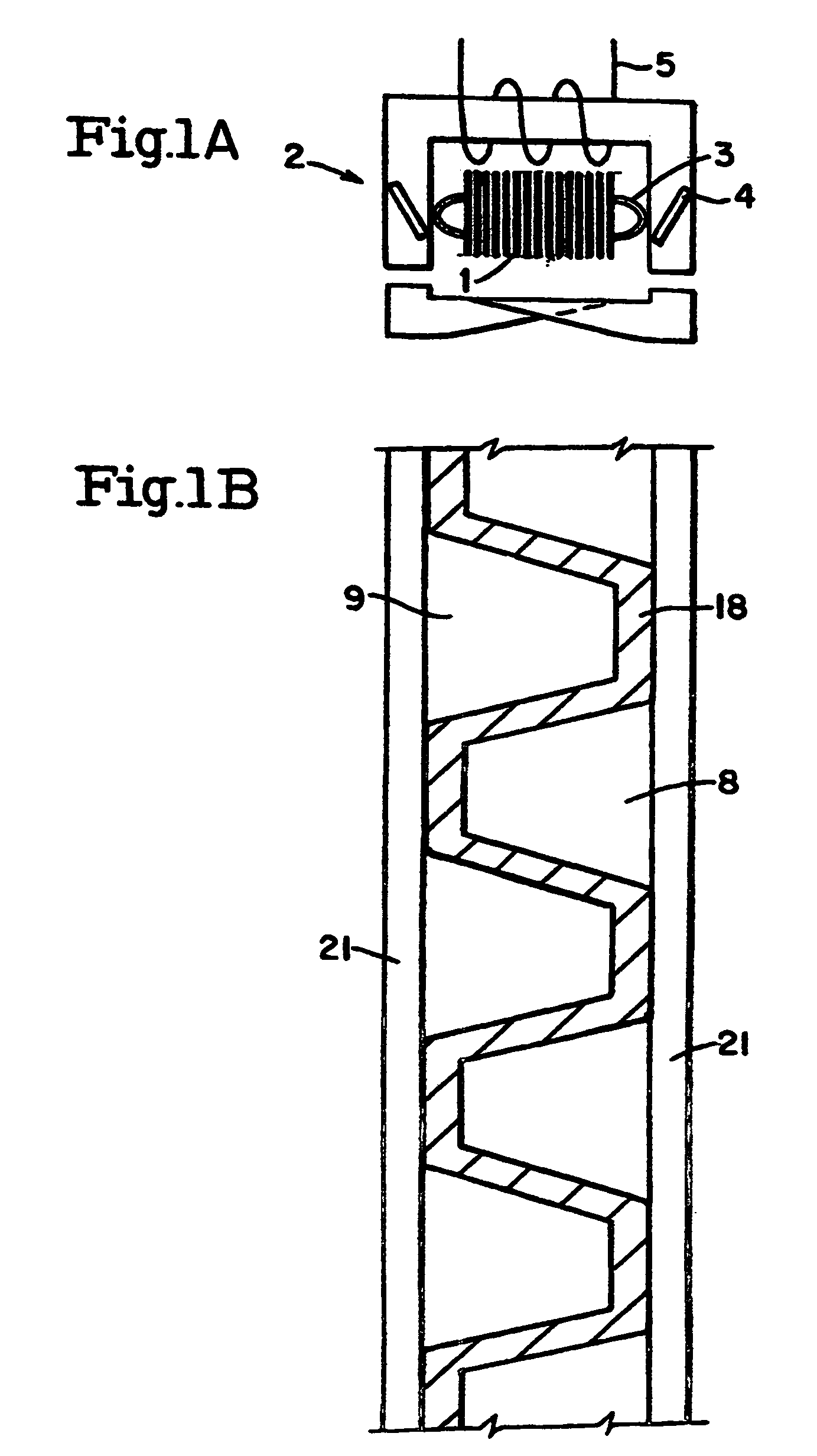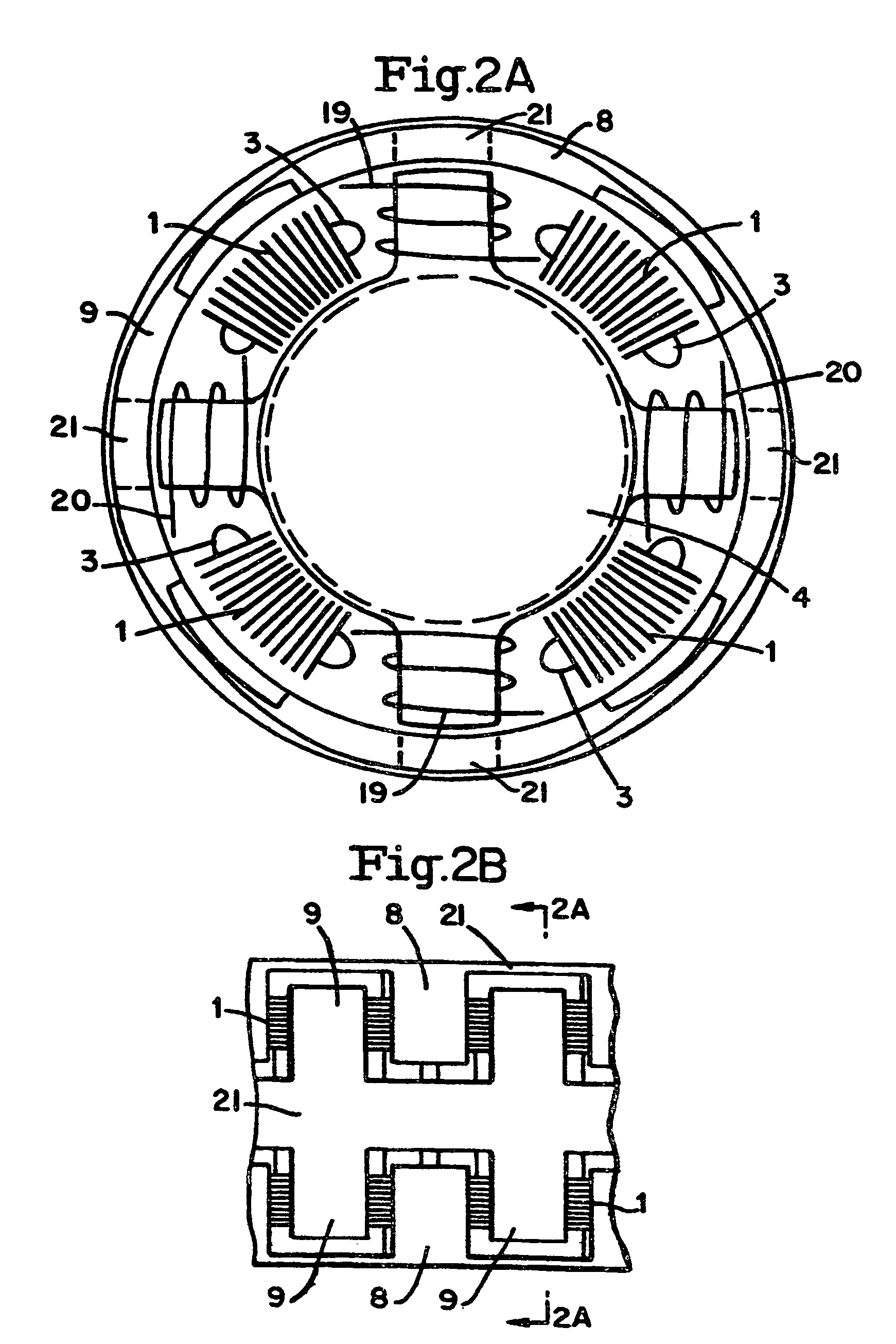Linear brushless D.C. motor with stationary armature and field and with integratable magnetic suspension
a brushless d.c. motor and stationary armature technology, applied in the field of brushless motors, can solve the problems of not being able to extend the motion of the structure, requiring considerable magnetic material, not being low cost nor lightweight, etc., to improve heat rejection, shorten the flux path, and extend the operational capacity
- Summary
- Abstract
- Description
- Claims
- Application Information
AI Technical Summary
Benefits of technology
Problems solved by technology
Method used
Image
Examples
Embodiment Construction
[0032]FIG. 1 illustrates a three element linear d.c. motor. Illustrated are the three parts of this novel motor. The armature 1 is standard, the field 2 is composed of a piece containing the source of magnetic flux 4 (stationary with respect to the armature), and the third element is a part with continuous axial surfaces 21 and interdigitated salient poles 8, 9, separated by a non-magnetic material 18.
[0033]An ironless armature version of the motor of FIG. 1 can also be employed, having the functionally same parts with the unique armature 1 containing no ferrous material formed in such a way to force magnetic flux thru a set of conductors (normally of three phases, connected for electronic commutation) in alternating directions to generate an e.m.f. when moved linearly with respect to each other, and axial thrust when energized by a suitable current source.
[0034]FIG. 2 illustrates a cylindrical form of a linear brushless d.c. motor with stationary armature and field. FIG. 2a shows a...
PUM
 Login to View More
Login to View More Abstract
Description
Claims
Application Information
 Login to View More
Login to View More - R&D
- Intellectual Property
- Life Sciences
- Materials
- Tech Scout
- Unparalleled Data Quality
- Higher Quality Content
- 60% Fewer Hallucinations
Browse by: Latest US Patents, China's latest patents, Technical Efficacy Thesaurus, Application Domain, Technology Topic, Popular Technical Reports.
© 2025 PatSnap. All rights reserved.Legal|Privacy policy|Modern Slavery Act Transparency Statement|Sitemap|About US| Contact US: help@patsnap.com



